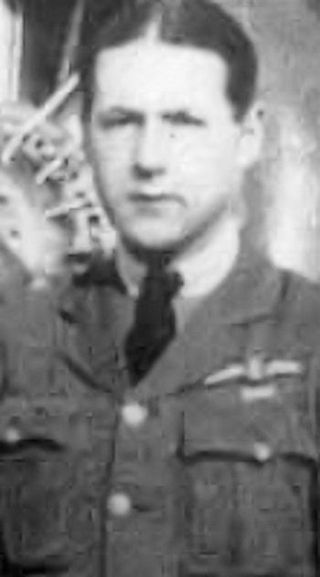Related Research Articles
Frank Ormond "Mongoose" Soden DFC & Bar was a First World War flying ace and RAF commander during the Second World War.
Captain Leslie William Burbidge was a World War I flying ace credited with six aerial victories. He flew as an observer/gunner in Bristol F.2 Fighters in 20 Squadron.
Lieutenant Philip Terence Holligan was a British World War I flying ace credited with six aerial victories.
Lieutenant Robert McLaughlin was a British World War I flying ace credited with six aerial victories.
Lieutenant Henry Coyle Rath DFC was a Canadian World War I flying ace credited with twelve aerial victories.

Lieutenant Kenneth Russell Unger was an American World War I flying ace credited with fourteen aerial victories. His candidacy rejected by his own nation, Unger applied to the British Royal Flying Corps for military pilot training in June 1917. Once trained, he was assigned to the Royal Naval Air Service (RNAS). As the RNAS was merged into the Royal Air Force, Unger scored his aerial victories between 26 June and 1 November 1918. In later life, Unger remained involved in aviation and served again during World War II. He also joined the U.S. Navy Reserves, rising to the rank of rear admiral.
Captain Oscar Aloysius Patrick Heron was an Irish World War I flying ace of the British Royal Air Force, credited with thirteen confirmed aerial victories. He later served in the Irish Air Corps, until killed in a flying accident.
Lieutenant William Thomas Barnes was an English World War I flying ace. He served as an observer/gunner in Bristol F.2 Fighters, gaining, in conjunction with his pilots, nine confirmed aerial victories over German Fokker D.VII fighter planes. Post-war he served in the Royal Irish Constabulary and was killed in the Kilmichael ambush on 28 November 1920.
Squadron Leader Walter Macfarlane Carlaw was a Scottish flying ace who served during World War I, and was credited with 12 confirmed aerial victories. He returned to RAF service during World War II.
Captain William Stanley Jenkins was a Canadian flying ace during World War I. He was officially credited with 12 aerial victories, having scored his first two while still on sick leave.
Captain Roy Manzer, was a Canadian World War I flying ace credited with 12 official aerial victories. After his aerial military service, he returned to Canada and a long and distinguished legal and civic career.
Captain Adrian James Boswell Tonks was a British First World War flying ace. He was officially credited with twelve aerial victories, and was twice awarded the Distinguished Flying Cross.
Captain Alexander Beck was an Anglo-Argentine aviator during World War I. He was an underage enlistee who went on to become a flying ace credited with 11 official aerial victories.
Lieutenant Thomas Montagu Harries was a Scottish World War I flying ace credited with 11 aerial victories. He was the second scoring ace using the Sopwith 1½ Strutter; he then also became an ace on the Royal Aircraft Factory SE.5a.
Wing Commander William Roy Irwin was a Canadian-born World War I flying ace credited with 11 aerial victories. In the process of becoming an ace, he rose as far as the rank of captain. During World War II, he returned to service, reached the rank of Wing Commander, and won an OBE.
Captain Harold Anthony Oaks (1896-1968) was a Canadian-born World War I flying ace credited with 11 confirmed aerial victories. Upon his return to Canada, his extensive pioneering activities as an aviator/geologist earned him enshrinement in the Canadian Aviation Hall of Fame.
Sergeant James Grant was a Scottish flying ace credited with eight aerial victories during World War I. The teenage non-commissioned officer was a rarity among aces. While most were commissioned officers and fighter pilots, he was an observer and gunner aboard a bomber. Nonetheless, his accuracy with a machine gun and his doughtiness led to his being awarded the Distinguished Flying Medal when he was only 18 years old.
Lieutenant Malcolm Plaw MacLeod (1897-1960) was a Canadian flying ace. He was credited with seven aerial victories scored during the closing days of World War I. He then returned to Canada to complete his education and work as a stockbroker until World War II, when he served in the Royal Canadian Air Force for the war's duration.
Lieutenant Valentine St. Barbe Collins was a World War I British flying ace credited with ten aerial victories who served with the Royal Flying Corps and the Royal Air Force.
Second Lieutenant Bruce Digby-Worsley was a World War I British flying ace credited with 16 aerial victories between June and September 1918.
References
- 1 2 3 "Kenneth Watson". The Aerodrome. Retrieved 25 January 2018.
- ↑ "Kenneth Bowman Watson". Find A Grave. Retrieved 25 January 2018.
- 1 2 Shores, Christopher F.; Franks, Norman & Guest, Russell F. (1990). Above the Trenches: a Complete Record of the Fighter Aces and Units of the British Empire Air Forces 1915–1920 . London, UK: Grub Street. p. 377. ISBN 978-0-948817-19-9.
- ↑ "No. 30357". The London Gazette (Supplement). 30 October 1917. p. 11130.
- ↑ "No. 31170". The London Gazette . 8 February 1919. p. 2048.
- ↑ "No. 31463". The London Gazette . 18 July 1919. p. 9140.